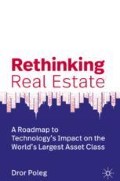Abstract
This is a book about the present and the future. But while writing it, we found ourselves constantly drawn to the past, particularly to the second half of the nineteenth century. The opening line of Charles Dickens’s A Tale of Two Cities, first published in 1859, encapsulates the spirit of our own time better than anything written since. Dickens wrote during the Industrial Revolution and about the French Revolution. He described a time of rapid change when both risk and opportunity were heightened to an unusual degree.
It was a time very much like ours. Retail spaces were becoming social and experiential. People were working out of coffee shops and lobbies. It was often difficult to distinguish between apartment buildings and hotels. Streets were bustling with new transportation devices. Consumers were more educated, better informed and, at the same time, more frivolous and seemingly irrational. New companies were emerging in new industries that reached unprecedented scale.
Access this chapter
Tax calculation will be finalised at checkout
Purchases are for personal use only
Notes
- 1.
Peripheral, in this context, does not refer only to places outside of the urban core . It also applies to urban locations that are located off main avenues, a little farther from the subway and other public transport. In some cases, the difference can be a matter of a few hundred feet.
- 2.
This is true even for hotels , where most large companies have multiple brands that compete with one another directly using mostly similar methods, offerings, and prices .
- 3.
For more examples of how companies discover and cater to customers’ “jobs to be done”, see Clayton M. Christensen, Competing Against Luck: The Story of Innovation and Customer Choice (S.l.: Harpercollins Publishers, 2016).
Author information
Authors and Affiliations
Rights and permissions
Copyright information
© 2020 The Author(s)
About this chapter
Cite this chapter
Poleg, D. (2020). Conclusion: Property’s Unreal Future. In: Rethinking Real Estate. Palgrave Macmillan, Cham. https://doi.org/10.1007/978-3-030-13446-4_22
Download citation
DOI: https://doi.org/10.1007/978-3-030-13446-4_22
Published:
Publisher Name: Palgrave Macmillan, Cham
Print ISBN: 978-3-030-13445-7
Online ISBN: 978-3-030-13446-4
eBook Packages: Business and ManagementBusiness and Management (R0)

